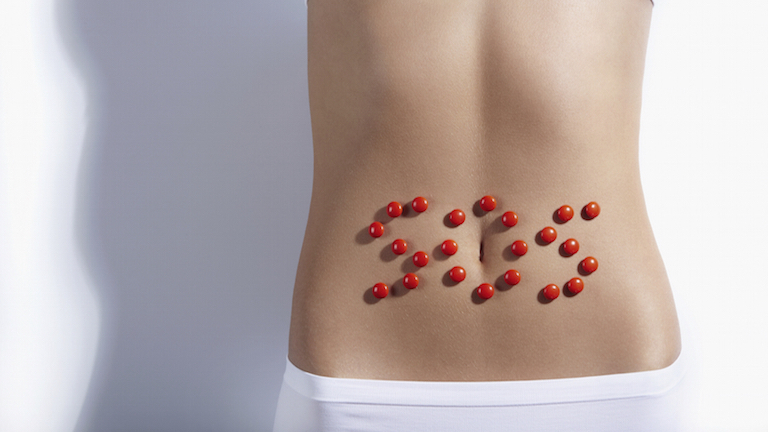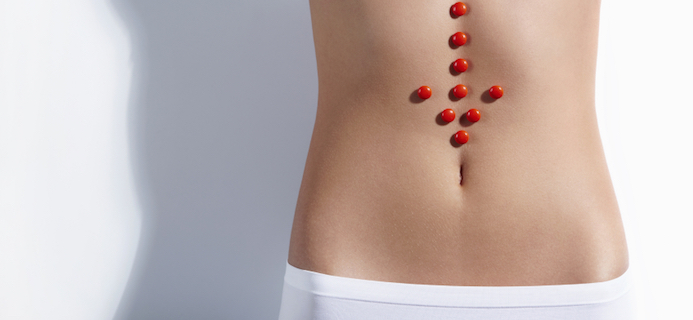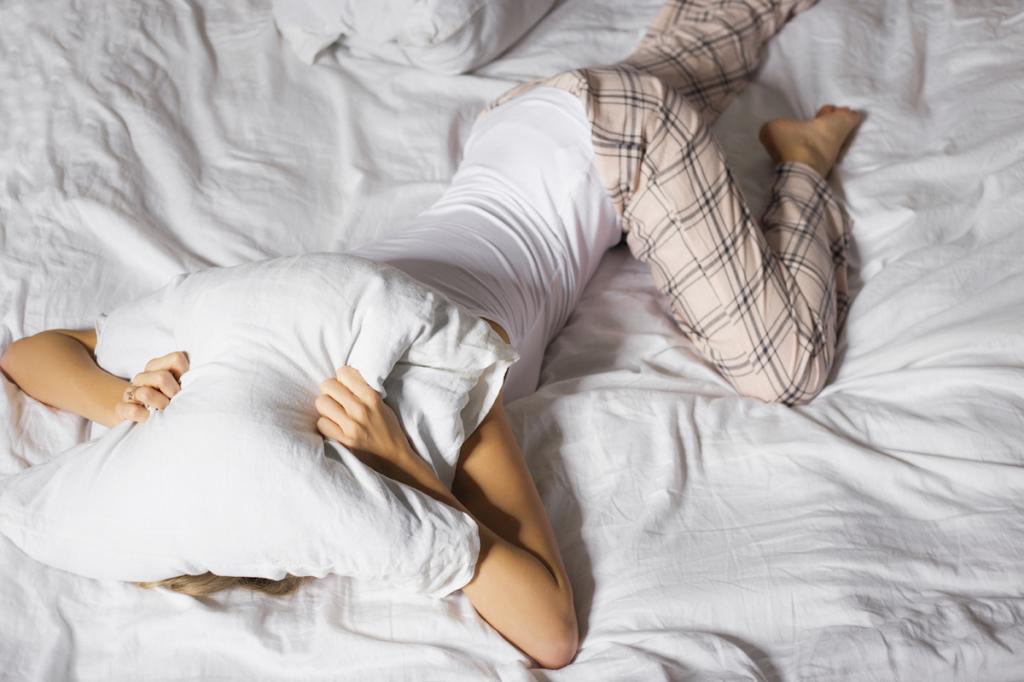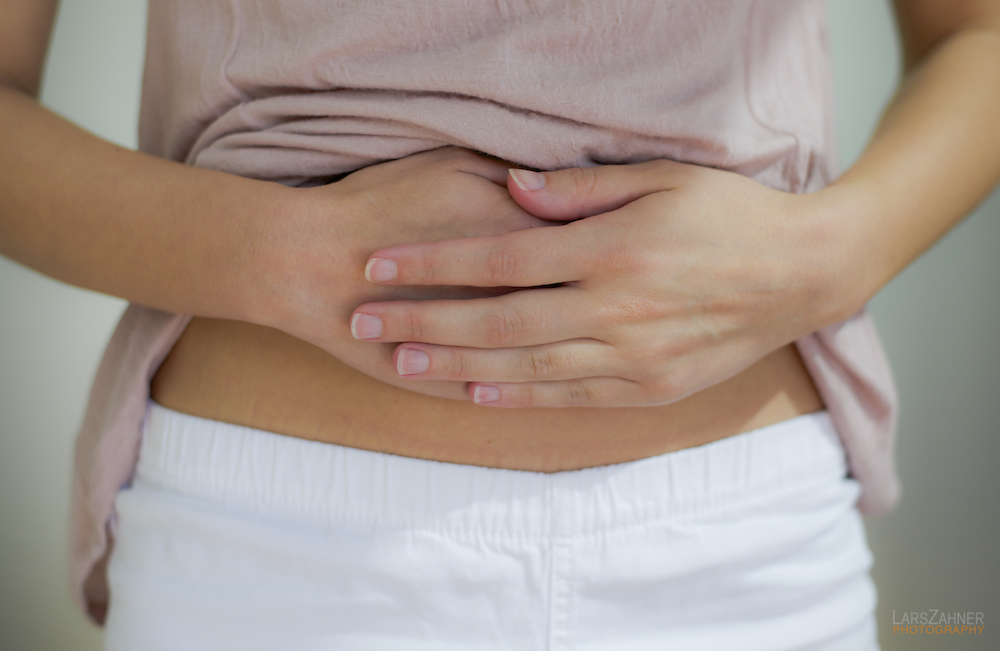Healthista GP Dr. Deyo Famuboni brings you 4 common PMS symptoms and the lifestyle changes that can help alleviate them
It’s that time of the month again, one or two weeks before your period, you start to feel mentally and physically uncomfortable. You put this down to being premenstrual and if you react in an unusual manner to certain situations, you attribute this to PMS (premenstrual tension syndrome). The chances are that you are right. PMS is common and research suggests that up to 30 per cent of women are affected by moderate to severe symptoms with another eight per cent experiencing the most severe form known as PMDD (premenstrual dysphoric disorder).
can worsen during puberty, post pregnancy, stopping or starting hormonal contraception and the perimenopause.
Affecting mainly women during their child bearing years, premenstrual tension syndrome is defined as mental, physical and behavioural changes that are distressing and occur during the second half of a woman’s cycle (called the luteal phase) and disappears or reduces for the rest of the cycle. The exact cause is uncertain, however it can worsen during periods of marked hormonal fluctuations such as puberty, post pregnancy, stopping or starting hormonal contraception and the perimenopause.
Premenstrual tension syndrome can range from mild, moderate to severe with a wide variety of symptoms. Some women may have one or two symptoms whilst others experience a wide range and it can be severe enough to impact quality of life. It is worth speaking to your doctor about your symptoms especially if it is affecting your lifestyle, those around you or you are concerned it is PSDD. Keeping a diary of your symptoms over two months of your cycle assists in reaching the right diagnosis for you.
The symptoms can also be far and wide, and there appears to be over a hundred associated with it. Here are some of the most common and what you can do about them:
Breast discomfort
What happens: Around this time of the cycle, known as the luteal phase, one of the hormones, oestrogen starts to drop and progesterone, another hormone, rises. This hormone is known to be associated with water retention and relaxation of certain muscles in our bodies. This is usually the body’s way of preparing in case pregnancy occurs. Due to this, the breasts can get bigger and become tender. Sometimes, cysts (fluid filled sacs) can occur. This tends to resolve once the progesterone level goes down and we have our periods. Taking simple painkillers like paracetamol or anti- inflammatory medicines like ibuprofen can help with the pain.
What you can do: Lifestyle changes with reported benefits from individual women also include limiting your caffeine intake, decreasing the amount of saturated fats (fats in foods such as crisps, chocolate, red meat, butter) and increasing the good fats (those found in oily fish, linseeds and pumpkin seeds), not smoking and other forms of therapies such as acupuncture and reflexology. Wearing a well-fitting bra during the day, a supporting bra at night and a sports bra during exercise have also been shown to help with breast pain. Other prescribed medications can also be effective and is worth discussing with your doctor should your symptoms be concerning for you.
Irritability and mood swings
What happens: Getting easily upset and irritable is reported by many women going through PMS. Sometimes, you can also feel anxious and depressed. Though the cause of this is unknown, there are ways to help.
What you can do: Regular exercise, relaxation, stress reduction (with methods such as mindfulness, yoga, acupuncture, talking therapy), complex carbohydrates in your diet (whilst limiting sugars, caffeine and simple carbohydrates) and having a good sleep routine all help to improve these symptoms.
ow dose of vitamin b6 (pyridoxine) can be helpful for period related irritability and mood swings
Studies have also shown that taking a low dose of vitamin b6 (pyridoxine) can be helpful. It can be found in a wide variety of foods including sunflower seeds, pistachio nuts, fish, to name a few. The herb agnus cactus (chasteberry) has been shown by several studies to help with irritable mood and breast tenderness. It can interfere with some medications and conditions and it is best to speak to your doctor before using it.
Weight gain
What happens: Mainly due to fluid retention, this can be severe, with some women gaining up to 1kg during this period. Alcohol, caffeine and a diet high in salt can all contribute to fluid retention. It is advisable to reduce them in your diet to help improve this. Diuretics and contraceptive pills have also shown as beneficial for the physical symptoms of PMS.
Dandelion is also a herb that has potential in helping with water retention.
What you can do: Magnesium, B vitamins such as thiamine and riboflavin, vitamin E and calcium appear promising as supplements that can also help symptoms of period-related weight gain. Some of these nutrients are found in legumes, nuts and green vegetables. Dandelion is also a herb that has potential in helping with water retention. It is advisable to speak to your doctor before taking supplements or herbs as it may interfere with any medical condition you may have or other medicines you are taking.
Bloating
What happens: As the hormones fluctuate,the muscles in our gut (bowels) become relaxed. This has two effects- they become more prominent and make the belly stick out. But the protruding belly also makes movement of stools through the bowel slower, causing constipation.
What you can do: Eating little and often, avoiding fizzy drinks, salty foods and dehydration as well as regular exercise (aim for the recommended 150 minutes of moderate intensity exercise every week with strength training at least twice a week) all help to improve these symptoms. A high fibre diet can also help to alleviate constipation.
Other posts by Dr Deyo
Dr Deyo Famuboni is a UK trained GP working in London with over ten years’ medical experience in the NHS and private services. She is a clinical advisor at the Royal College of General Practitioners and has an avid interest in health and nutrition. Passionate about living a healthy lifestyle, she ensures she has balanced meals and exercises regularly, as this is very important to the well-being of women.
For helpful tips about your health, follow Dr Deyo on Twitter: @DoctorDeyo
If you’re looking for more info and advice on health and wellbeing, check out Dr Deyo’s website.
Like this article? Sign up to our newsletter to get more articles like this delivered straight to your inbox.

























































